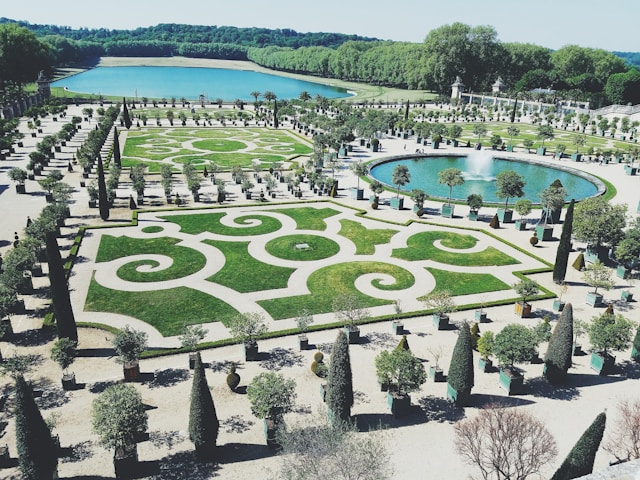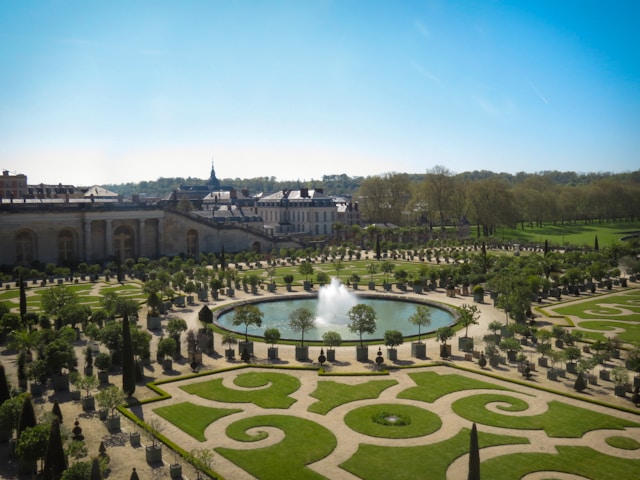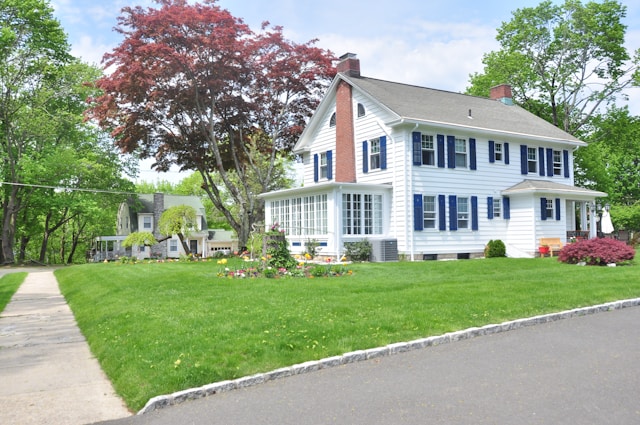
Native Plants Are Messy: Is That True?
Native plant gardens are messy. That’s the number one claim that people such as myself face. But are natural landscapes really an unruly tangle? This article investigates.
I met a friend at my plant sale the other weekend. She was interested in having me help with her garden. But then she asked: does it have to be messy?
I get that question a lot. It’s a valid one.
The answer is yes…. and no. To explain, I need to dig into human psychology and culture.
Our landscaping inheritance
The garden aesthetic we have inherited comes from Europe. If you look back at the history of garden design, most of it was about showing human dominance over nature, controlling it to create something that pleases us and shows our status.
Look, for example, at the garden at Versailles. It’s the height of formality – nature clipped into tight patterns. It’s a landscape fit for a king.

Or, in a different style that appears more natural and yet is still controlled, a garden by the British landscape architect Capability Brown. Scores of grand houses in England moved vast quantities of earth to create these landscapes.

Fast forward to the 20th and 21st Centuries, and it’s not a huge leap to today’s suburban gardens, with their lawns and controlled beds of plants.


Human nature doesn’t change. Ever since we invented agriculture, we’ve tried to tame nature, dominating it and bending it to our will.
The clipped and controlled garden, with exotic rather than native plants, is us saying: we, too, just like kings and dukes, are better than the crows and ants. We’re top of the heap.
This attitude is so entrenched that anyone who goes against the grain, who resists the urge to trim plants and fertilize lawns bright green and instead uses “messy” native plants, is somehow failing. They’ve fallen off the pinnacle of human development and, worse, they’re not playing the game.
These people are low status. And low status equals bad.
Neat lawns and high status
I often say that the way we garden is a microcosm of the way we live. We play status games – we want to look good in front of others. This very normal human desire is then built on by big business and its marketing experts. In the middle of the 20th Century, marketing took over the world: just watch an episode of Mad Men to see how it happened. Buy this, do that and you will look good, feel good – and have high status.
The result is, more stuff is bought, more things are done. We have bigger lawnmowers and exotic plants with splashy blooms. The landscaping services industry in Canada is worth over $14 billion. There’s a lot of interest in keeping the money coming in. If you don’t mow your lawn, big business suffers. The result is an economy that keeps getting bigger, so we take more from nature to meet the ever-higher target of status.
If you’re reading this, you already know that humans are trashing the environment. It’s not just about the carbon dioxide we pump out that is warming the climate, but it’s also about the chemicals we release and the habitat we destroy that is causing biodiversity to crash.
The tension we face
So this is what natural “messy” native plant gardeners, who work with nature rather than controlling it, face. We’re up against everyday society and against big business. And we’re up against our ingrained need to maintain status.
Because of this, we feel a massive tension. Our desire to do the right thing, such as plant a garden of “messy” native plants rather than mow a lawn, comes up against our deep desire to fit in and to maintain status. This feeling is normal. I feel it too.
So we have to make a choice: do we give in to our psychology and the pressures of society, or do we take a stand?
This is why I think gardens are a great place to start. It’s a way to be brave close to home. It’s a way to make a difference. And it’s a way to look inside a little and consider: what’s important here?
It doesn’t mean we have to rip off the Band Aid. It doesn’t mean we have to give up and let our gardens grow wild. This serves nobody: it doesn’t serve nature (because invasive plants might take over), it doesn’t serve ourselves (because we feel our status is crashing) and it doesn’t help our cause.
Meeting the world (and ourselves) half way
If we’re going to make change – to ourselves and to society as a whole – we have to make that change easy. We have to meet the world half-way.
We have to create our own form of marketing because we’re up against the marketing of the last seventy years. We have to change the status of “messy” native plant landscapes.
When it comes to landscape design, there are things we can do. We can include “cues to care”, which show that what we are doing is intentional. These might include mowed strips of grass, pathways, benches, and sculptures. All these say: this is a garden, not a neglected patch of dirt.
We can also design carefully. We can create patterns by planting in drifts and clumps. We can repeat these patterns throughout the landscape. We can ensure flowers bloom throughout the season. And we can choose plants that play nicely together, ensuring that no one species takes over.
All these things are triggers in the brain: we recognize a kind of beauty, even if it’s not the beauty that mainstream culture demands.
A better world is right outside your door
Can we sit comfortably in this half-way place? Can we use our domestic landscapes to advocate for a change in society while at the same time making that change pallatable?
I think we have to.
The problems the world faces are so huge, we feel powerless.
One way we do have power is outside our front door. It’s up to use to “go beyond pretty”, to advocate for a way of life that respects the rest of nature, and at the same time shows an attractive pathway for people to follow.
Simon Payn
